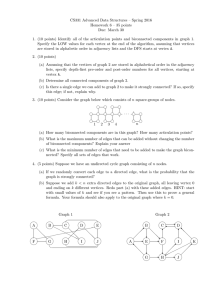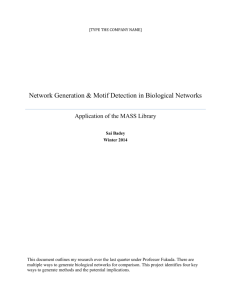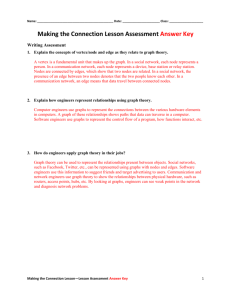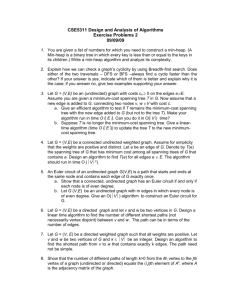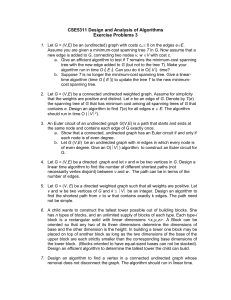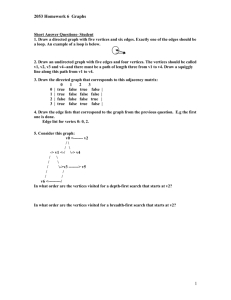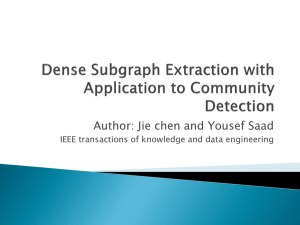Graphs and Graph Traversals
advertisement
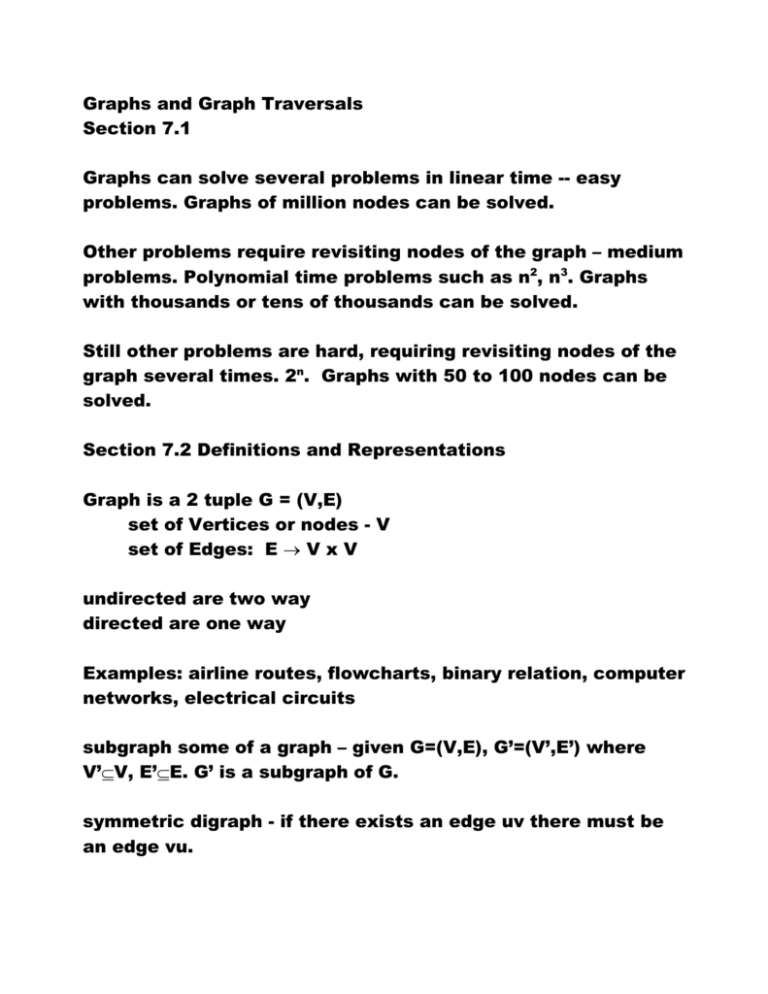
Graphs and Graph Traversals Section 7.1 Graphs can solve several problems in linear time -- easy problems. Graphs of million nodes can be solved. Other problems require revisiting nodes of the graph – medium problems. Polynomial time problems such as n2, n3. Graphs with thousands or tens of thousands can be solved. Still other problems are hard, requiring revisiting nodes of the graph several times. 2n. Graphs with 50 to 100 nodes can be solved. Section 7.2 Definitions and Representations Graph is a 2 tuple G = (V,E) set of Vertices or nodes - V set of Edges: E V x V undirected are two way directed are one way Examples: airline routes, flowcharts, binary relation, computer networks, electrical circuits subgraph some of a graph – given G=(V,E), G’=(V’,E’) where V’V, E’E. G’ is a subgraph of G. symmetric digraph - if there exists an edge uv there must be an edge vu. adjacency relation - two vertices connected by an edge. path – sequence of edges cycle – sequence of edges where initial node is the final node weighted graph – can include weights in the adjacency matrix or in the nodes of an adjacency list. adjacency representation adjacency list depth first traversal breadth first traversal topological order Section 7.7 Biconnected Components of an Undirected Graph If any one vertix (and the edges incident upon it) are removed from a connected graph, is the remaining subgraph still connected? Biconnected component A connected undirected graph G is said to be biconnected if it remains connected after removal of any one vertex and the edges that are indicent upon that vertex. Articulation point A vertex v is an articulation point (also called cut point) for an undirected graph G if there are distinct vertices w and x (distinct from v also) such that v is in every path from w to x. Clearly, biconnected iff no articulation points. Algorithm does a depth first search. Section 7.7.2 The Biomponent Algorithm Bicomponent algorithm tests to see if a vertex in the depth first search tree is an articulation point each time the search backtracks to it. Suppose the search is backing up to v from w. If there is no back edge from any vertex in the subtree rooted at w to a proper ancestor of v, then v must be on every path in G from the root of the DFS tree to w and is therefore an articulation point. The algorithm must keep track of how far back in the tree one can get from each vertex by following tree edges (implicity directed away from the root) and certain back edges. In a depth first search tree, a vertex v, other than the root, is an articulation point if and only if v is not a leaf and some subtree of v has no back edge incident with a proper ancestor of v.
